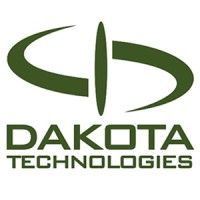100 项与 Dakota Technologies, Inc. 相关的临床结果
0 项与 Dakota Technologies, Inc. 相关的专利(医药)
1999-12-01·Applied Spectroscopy
On-the-Fly Fluorescence Lifetime Detection in Liquid Chromatography with Data Collected Simultaneously at Multiple Emission Wavelengths
作者: Dvorak, M. A. ; Gillispie, G. D. ; Burt, J. A. ; Oswald, G. A.
A novel liquid chromatography (LC) fluorescence detector simultaneously generates fluorescence decay curves at multiple emission wavelengths. The fourth harmonic (266 nm) excitation light from a pulsed Nd:YAG laser is focused into a standard LC flow cell. A small spectrograph disperses the fluorescence. Fiber-optic delay lines positioned in the exit focal plane time the arrival of photons at the photomultiplier tube detector. Four wavelength channels with 50 ns channel spacing were used in this study. The intensity-decay time waveform is averaged with a digital storage oscilloscope. Temporal overlap between adjacent wavelength channels is removed during the post-processing of the data. System performance was characterized for chromatographic elution of polycyclic aromatic hydrocarbons (PAHs). Detection limits are 1.6 ppb for naphthalene and 0.14 ppb for fluorene. Resolution of co-eluting 1,4-dimethyl-naphthalene and anthracene components on the basis of differences in their lifetimes and spectral distributions is demonstrated.
Real-time continuous measurement of subsurface petroleum contamination with rapid optical screening tool (ROST)
作者: St. Germain, Randy W. ; Gillispie, Gregory D.
The Rapid Optical Screening Tool (ROST) is a tunable laser induced fluorescence (LIF) spectrometer specifically designed for fiber optic spectroscopy and field measurements.While temporarily deployed on cone penetrometer trucks, ROST systems have been used to assess subsurface petroleum contamination at more than 25 sites in the United States and Europe.The topics covered in this paper include: (1) tech. overview of the ROST hardware; (2) ROST mobilization procedures, installation on cone penetrometer test trucks, and data interface with the geotech. sensors; (3) representative data from the field projects to date.
Where are lasers in the p-chem lecture course?
作者: Gillispie, Gregory D. ; Meidinger, Roxane
Lasers are essential to modern phys. chem., yet their underlying principles are almost totally neglected in several popular p-chem texts.A student who wonders "What is a laser and how does it work" gets no guidance or insight.The fact that one can not cover all the text material in the standard course already does not justify ignoring the most significant exptl. development of the last 50 yr.Students are sent confusing signals if lasers are relegated only to the laboratory course.We propose routes to: 1) meaningful incorporation of lasers into text discussions of quantum, kinetic, and spectroscopic principles; 2) expanded demonstration of laser principles and practice in the classroom; 3) expanded "cross-talk" between the laboratory and lecture.Candidate topics for deletion in order to free up space in the curriculum for lasers are identified.
100 项与 Dakota Technologies, Inc. 相关的药物交易
100 项与 Dakota Technologies, Inc. 相关的转化医学







